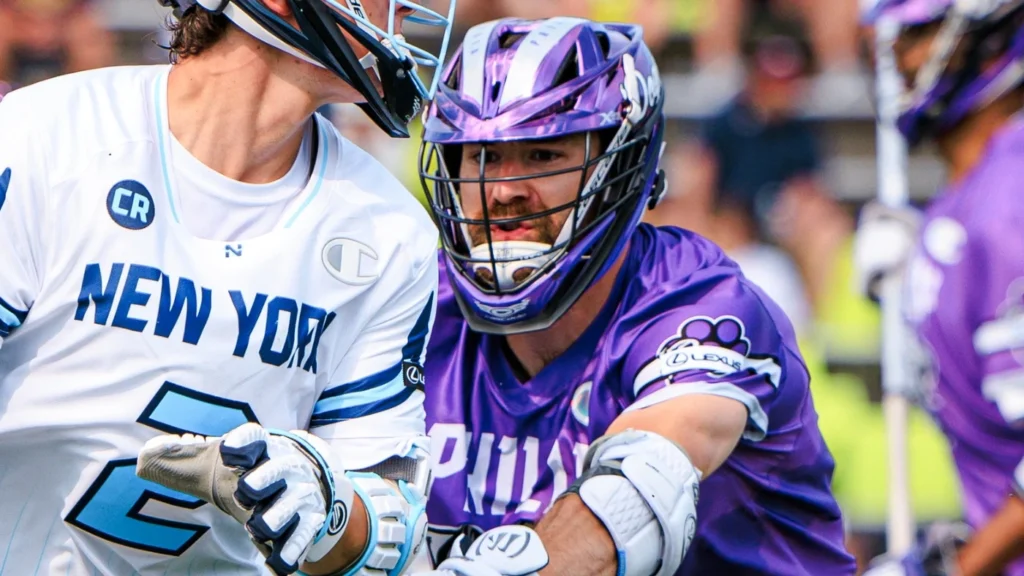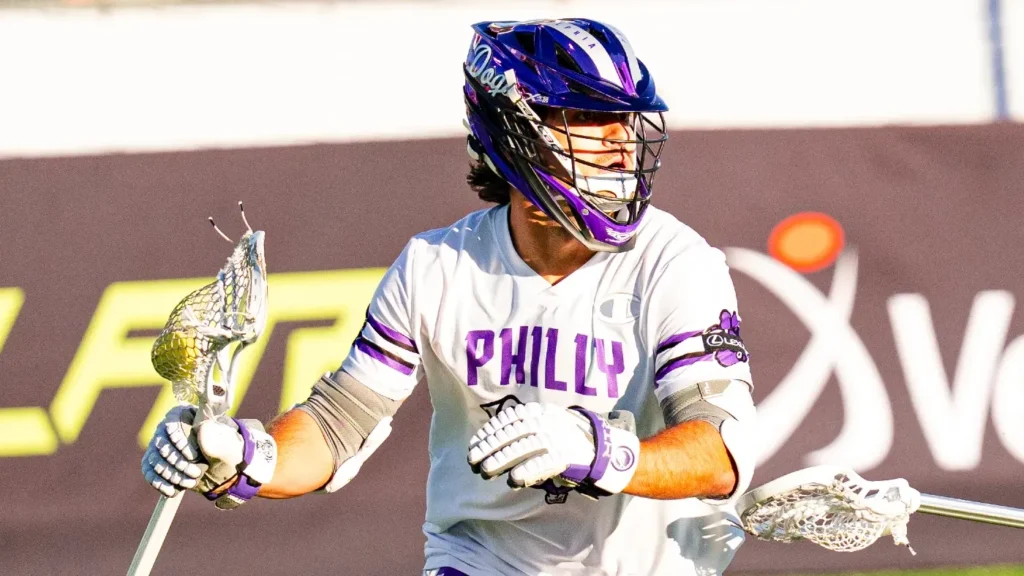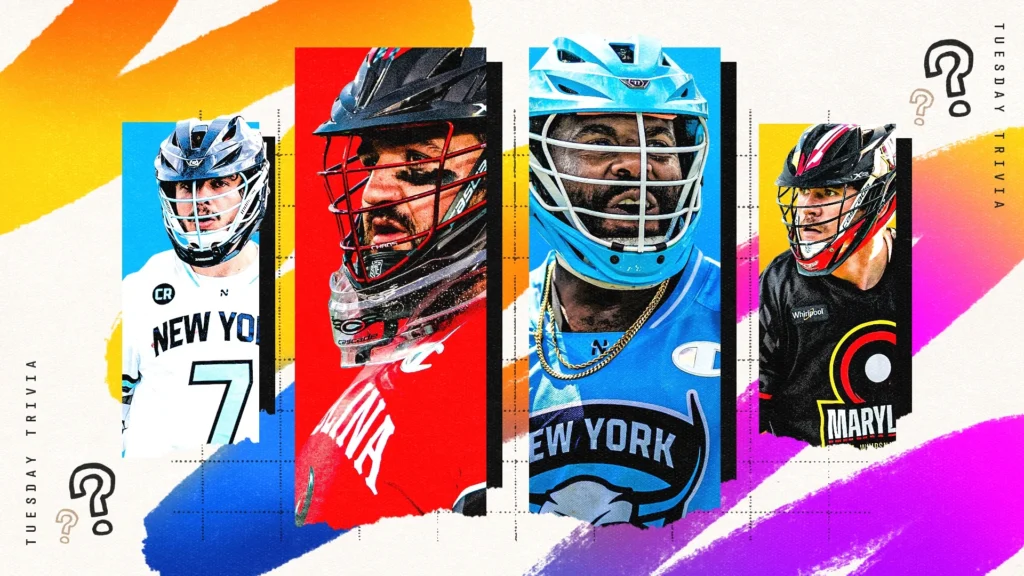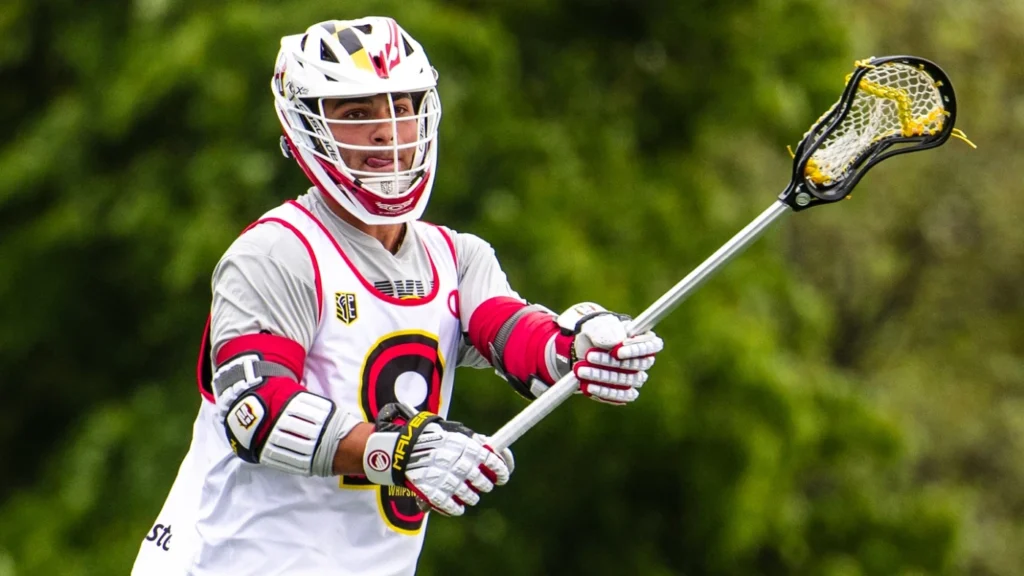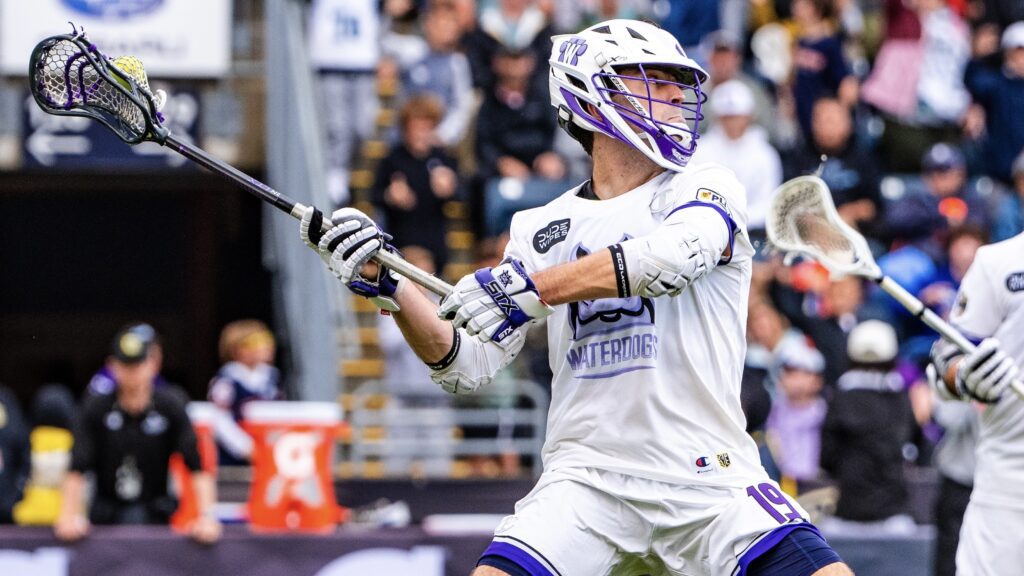
Data Dive: Why 2-point efficiency is vital in the Championship Series, and how it’s achieved
By Wyatt Miller | Feb 5, 2024
The most significant statistical difference between winners and losers in last year’s Championship Series was 2-point percentage. Winners converted at a 46.2% rate, while losers shot 23.3% from beyond the arc.
The 13-yard arc is “a shooter’s dream,” said Philadelphia Waterdogs midfielder Jake Carraway, and the initial impulse is to take advantage of it by peppering 2s from all directions. Yet, in last year’s tournament, losing teams actually shot more 2s than winning teams, showing how volume alone isn’t a sound strategy.
In all nine of last season’s games, the team with the higher 2-point percentage won. It’s a small sample size, but that’s a statistically significant pattern. Teams who were purposeful with their 2-point shot selection won games, while sheer volume proved to be a double-edged sword because of how resulting saves can impact the ensuing possession.
In four of the nine games, losing teams shot and scored a higher number of 2-pointers than their opponents. In addition, all four teams that shot five or less 2s in a game ended up winning against teams who shot 10+. None of this is to say that volume is bad – 2-pointers are vital in sixes, but they can also be deadly without an efficient strategy.
Even with just a nine-game sample size, linear models prove the statistical significance of efficient 2-point shooting in this format. Here’s how efficiency is achieved, along with the consequences when it isn’t.
Everyone achieves efficiency differently
Efficiency is a product of successful systems. Typically, teams who hit a high percentage of 2s move the ball, and move without the ball, well. Of the 70 2-point goals made in last year’s tournament, 36 were assisted (51%), while only 41% of 1-point shots were assisted.
Personnel and coaching style often dictate the approach. Pick-and-rolls, weave plays and off-ball screens were common occurrences last year, giving teams multiple avenues to the net while clearing out the middle of the defense. Other times, coaches just let their top shooters go to work on shorties.
In 2023, the Chrome, Whipsnakes and Archers combined 23 assisted 2s on 32 shots, meaning 71.9% of their collective deep balls were assisted. They simply didn’t have the shooters to frequent unassisted deep shots like Atlas, who featured Romar Dennis, Carraway and Bryan Costabile leading a host of offensive playmakers.
Atlas was the odd man out last year, but in a good way. They scored 38 long balls – more than triple any other team – including 25 of the 34 unassisted 2s in the tournament. Dennis hit 12 of those 25 himself, often using picks and a quick trigger to get a step on short-stick defenders.
Teams will certainly look to Atlas’ tape for unassisted success from beyond the arc, as the short sticks provide plenty of opportunity for it. Apart from Dennis, players like Carraway (Philadelphia), Kieran McArdle (Philadelphia), Sergio Perkovic (California), Chris Aslanian (Boston), Marcus Holman (Boston) and Matt Moore (Utah) have the potential to generate unassisted 2s. Since 2019, all seven have scored at least eight goals from 13 yards out on 15%+ shooting, and will likely excel in this format.
The 2024 rosters have more offensive firepower than last year’s, along with nine games of tape at their disposal. There’s plenty of uncharted territory as far as strategy and movement in sixes, so offenses will surely build on last year’s success with some innovative, pass-heavy schemes to leverage their advantage.
2-point efficiency will likely be even higher in year two with more shooters and experience to pull from. That said, even the league’s best snipers should lean on team offense and not raw skill, especially in clutch moments.
Consequences of 2-point saves
In sixes, good 2-point attempts don’t just produce more points for, but also less points allowed. That’s why efficiency is so important.
2-point misses generally come at a higher price than 1s. On average, they lead to better offensive opportunities on the next possession because clean saves are much more common. Efficiency isn’t just about making shots, it’s about choosing good ones based on the situation.
Since 2019, shots taken from at least 13 yards out have been saved cleanly 45.6% of the time. Inside of 13 yards, saves have been clean just 24.6% of the time. Last year’s Champ Series rates were consistent with that pattern: 20.7% of 2s and 10.3% of 1s were saved cleanly.
This matters because clean saves do more than just end the possession. They can lead to transition opportunities or give coaches an opportunity to substitute and call plays. That showed up in the 2023 stats, as Champ Series teams had an offensive efficiency of 44.1% after a clean save, as opposed to 38.4% after a messy save.
There is always a risk assumed with shooting a low-percentage shot, but the ensuing advantage is magnified in this format.
Last year’s championship was one of four games where the winner hit less 2s (three) than the loser (five). Atlas made 28% from deep on 18 attempts and lost by one point to Chrome, who shot just five times from long range (60%).
Atlas won their first four matchups by shooting 12+ 2s in each, converting at 48% and never shooting below 44% in any of those matchups. When that dropped to 28% in the championship, Chrome exploited Atlas’ deep-ball dependency and turned it into points of their own.
Dennis shot 37 2s in the tournament, more than doubling the attempts of the next closest player. And with the Atlas down two, he got trigger-happy in the waning minutes. Rather than waiting for the offense to get set, Dennis quickly ripped a running 2-ball from well beyond the arc, and Sean Sconone snagged it.
Clean saves in the @PremierLacrosse Champ Series are very significant, and this play illustrates one reason why:
— Wyatt Miller (@wymill07) February 5, 2024
‘23 Champ Series:
- Offensive efficiency following clean saves: 44.1%
- Offensive efficiency following messy saves: 38.4% pic.twitter.com/hAaioi5ePE
Gibson Smith IV passed Dennis off to another defender right before the shot, and then raced upfield as soon as it was saved. He caught the transition pass from Sconone with no defenders in sight, and an easy finish off the turf gave the Chrome a three-point lead. That five-second sequence massively swayed the game’s outcome.
This is a shot Dennis hit multiple times prior, but he was just too deep on this attempt. And because the top defender passed Dennis off, he had a running start in transition with nobody in front. Dennis has to understand the implications of that shot before taking it late in the game. Minutes later, Chrome netted a one-point goal before earning a game-winning stop in the 24-23 victory.
